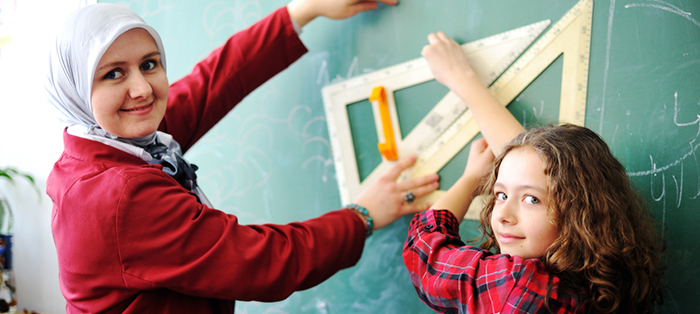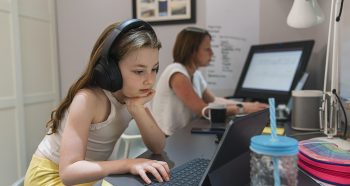Calculating the problem
When I run workshops with teachers around the world I regularly ask them as an icebreaker what their least favourite subject was at school. Based on a straw poll of the 400 or so people I have surveyed in the last year, the most (or should that be least) popular subject by far has been Mathematics.
In the UK where I live, but much less so in other countries, it has almost become a badge of honour to say how bad you are at Maths. Many adults struggle with simple calculations, including those they have to do on a daily basis. In the US I have noticed shop assistants needing ready reckoners to work out basic additions for state sales tax. Others regularly find it hard to determine what percentage to leave as a tip in a restaurant.
Despite an A at GCSE and even an AO Level in the subject, I am not as confident as I feel I should be at Maths, and I increasingly wonder why this is. Was it because my first teacher at secondary school was also in charge of sport, which was the extra curricular activity I most dreaded as a small boy? Was it because as I got older and more active we were made to sit quietly in rows ploughing through endless, repetitive exercises? Or was it because so much of what we did in Maths lessons was in the abstract, far removed from real life?
Finding the right formula
In my work in international education I’ve been fortunate enough to consider teaching and learning across the whole curriculum, talking with experts and observing countless lessons. This has enabled me to move beyond my comfort zones of languages, the humanities and the creative arts, and appreciate other subject areas to a much greater extent. I credit the Faculty of Mathematics at Cambridge University and above all those working with the NRICH Maths Project for helping win me (and many others) back to their discipline.
It is through them that I got to learn of the work of Jo Boaler, Professor of Mathematics Education at Stanford University, and came to read her insightful book, “The Elephant in the Classroom: Helping Children Learn and Love Maths” (Souvenir Press, reprinted 2016). Her goal is to make Maths more relevant, applicable, exciting, beautiful and alive. She wants to remove the chances of children having a poor experience of Maths at school, and she says this is best done through making learning applicable to life.
She suggests ways of encouraging creativity and original thinking through reflection time and collaborative project work rather than ‘drill and kill’. She advocates helping children learn from mistakes and using methods that might be more familiar to teachers of subjects other than Maths, such as drawing, listening, reading, writing and speaking. Above all, she wants to give those who will not continue to study Maths at a higher level a ‘sense of number’ so that everyday calculations become an easy habit rather than a bad joke!
Determining the value
Professor Boaler describes many lessons she has observed as existing only in ‘Mathsland’, an insular country removed from reality. This made me wonder how applicable this is to other subjects and reminded me of the work of Professor David Perkins at Harvard Graduate School of Education, author of “Future Wise: Educating Our Children for a Changing World” (Jossey-Bass, 2014). To what extent is what we teach important and relevant for our students’ future? How likely are certain topics ever to appear again in their lives? What is their ‘comeuppance’? What is ‘worth’ learning?
Perkins quotes John Dewey, who stated in “Democracy and Education” a century ago:
“Only in education, never in the life of farmer, sailor, merchant, physician, or laboratory experimenter, does knowledge mean primarily a store of information aloof from doing.”
He goes on to suggest that when we consider subjects and skills to learn, we shouldn’t be distracted by ‘all possible futures’ but should instead focus on what is most likely to matter in the lives learners might lead. At the same time, room must be made for children to become ‘expert amateurs’, able to apply their skills and knowledge ‘confidently, correctly, and flexibly.’
There is much here for curriculum designers to consider. In essence, whether we’re teachers of Maths or any other subject, how do we ensure that what we teach our students is applicable in the real world? To what extent do we show connections and provide interesting challenges, and how do we encourage open mindsets?
In summary, how can we best make our lessons count?





